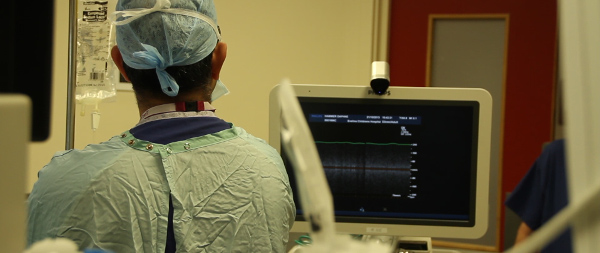
Video collaboration in the medical industry is changing the way hospitals are run, and how patients are treated. Easier communication and faster results are the main goals from using video devices in hospitals.
Several hospitals in the UK have adopted solutions such as Polycom RealPresence, that allow cardiologists to work remotely, viewing scans in real-time and collaborating with staff in the theatre. This enables doctors to spend more time analysing scans and collaborating, and less time scrubbing up and stalling surgeries by making long trips to theatres.
Dr John Simpson, consultant paediatric cardiologist at Evelina London Children’s Hospital said: "In our current way of working there is one consultant who’s on-service for our inpatients. [At any given time] they could be in the intensive care unit, making a ward round, or talking to parents. And if they were called to theatre they would have to scrub, get changed and go to theatre to be able to directly review the images. That would take around about 90 minutes." After integrating a Polycom RealPresence Group 500 with a Philips Ultrasound cart, that time has been cut to around 4-5 minutes.
This technology has been implemented in a number of hospitals, including Guy’s and St Thomas’, in a bid to increase remote collaboration.
CBR spoke to Frank Baldesare, who works in the IT department of Guy’s and St Thomas’ Hospital about the latest video technology in the hospital, and how it is affecting surgeons and patients alike.
Can you tell us a bit about your role within the company?
I work within the IT enterprise architecture function for Guy’s and St Thomas’, so it’s about enterprise design generally.
My remit is collaboration and digital media, so collaboration technologies, video conferencing and digital media. So anywhere where we’ve got a video or a collaboration requirement is within my bag.
The hospital has integrated the Polycom RealPresence Video Solutions with a Philips Ultrasound cart. What has that changed within the day to day running of the department?
We had a problem where the cardiologists were being called to theatre to give an opinion during heart surgery, and the problem that was articulated to us was that we were losing about 30-40 hours a month of consultant cardiologist time, running to theatres and scrubbing up, when their primary diagnostic was an echocardiogram, which runs during the surgical procedure. that is run on the back of a Philips ultrasound machine, and what we did for this project was we took a new Polycom group series video codec and enabled the cardiologist to call into the echocardiogram from several locations where the consultant cardiologists were doing their normal daily business.
They’re saving a lot of very expensive consultant cardiologist time and theatre time, because while people wait for cardiologists to arrive, the whole theatre goes on standby. And of course for the patient it’s much better because they’re not left waiting for a decision.
During a heart operation, the surgeon would uncover something unexpected or would require the opinion of a cardiologist, they would then bleep for him and wait for him to scrub up and arrive which was typically 20-30 minutes. So what this new system means is that when they bleep the cardiologist, he walks over to a device, presses a button, and he’s in an audio dialogue and can see the echocardiogram, in HD quality remotely. So rather than that taking 30 minutes, it’s happening within a minute or two. So for the patient it’s 30 minutes less ‘do nothing time’ during the operation.
What other challenges have the IT department faced within the hospital?
For this particular solution, once the problem was articulated to us, it was obvious what we wanted to do, and that was put an echo deck on the back of the device, the ultrasound machine. So the problem from there was we had to talk to Philips and make sure they weren’t going to invalidate their warrantees and those kind of things. Then we had to build the system to be patient safety compliant within the theatres, so as part of that process we involved our medical devices team and medical engineering team who actually built the shelf and laid all the cables in things for us on the back of the device. We put in our own power isolator on the back of the ultrasound machine, which isolates and prevents earth leakage across the systems, so it’s compliant with theatre safety standards.
How easy is it to deploy – did it require training?
No it’s a one button call. The request was for a one button call system and we’ve managed to do it in two. Switch the system on and press the ‘call’ button. It’s very very simple. All the audio and microphones are configured to work in that environment.
Since it went live, we’ve had requests from several other departments. In terms of that wider piece of being able to install a similar solution in an outpatient clinic with a local paediatrician, that’s something we need a request or direction from our cardiologist team. I think that’s likely to take a few more months to come through. And also for cochlea implants, it was for the audiologists to remotely calibrate the implant post-surgery.
The equipment was donated to you, but if it hadn’t have been, would you have still invested in it?
Yes. We had another source of funding and we approached several of our manufacturers to see how they would help us, and Polycom fantastically proposed that they would donate the equipment as part of that process, but we would have bought the equipment otherwise. We were actually after a big discount as opposed to a donation of equipment – so we were very pleasantly surprised!






